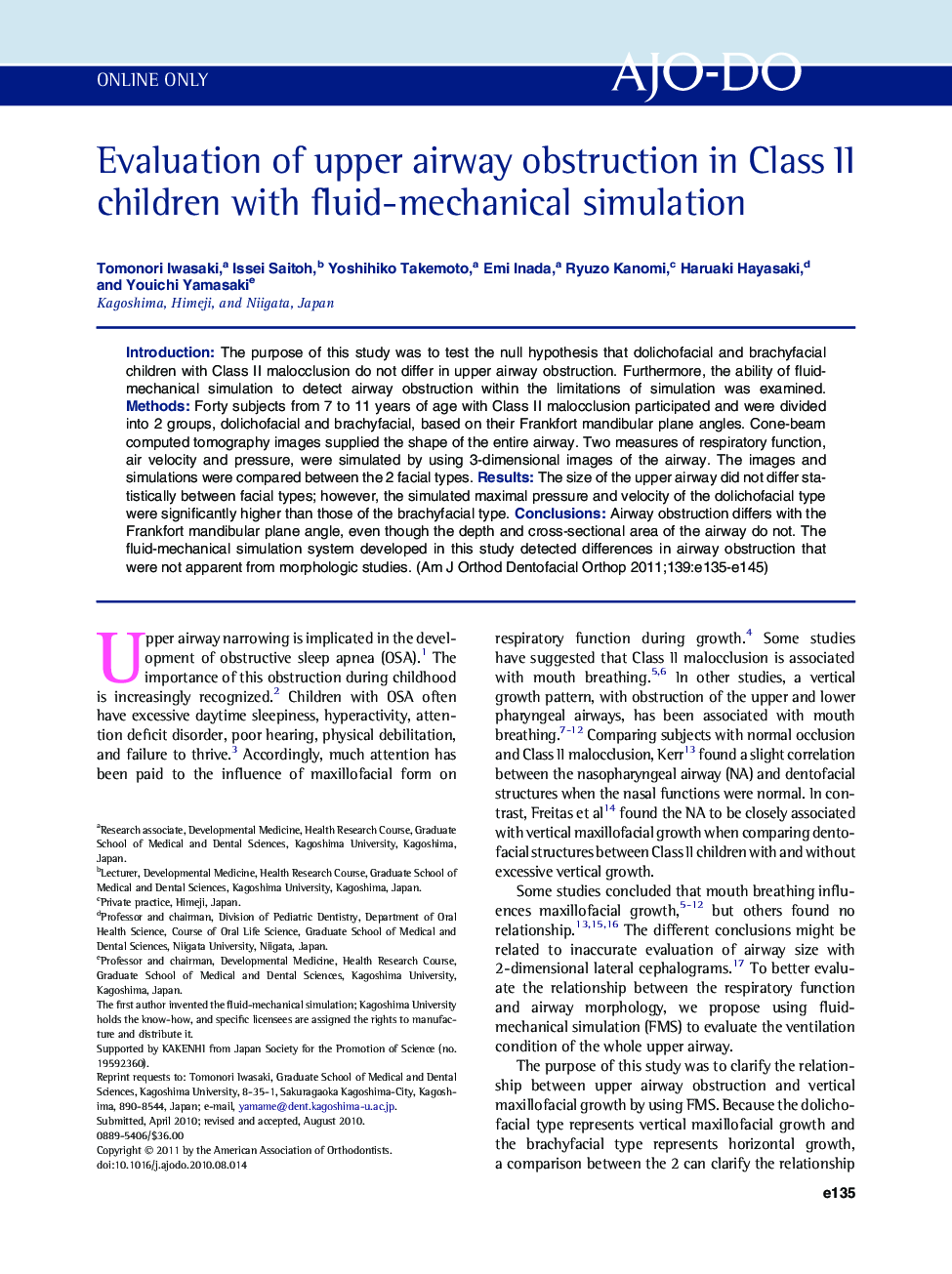| Article ID | Journal | Published Year | Pages | File Type |
|---|---|---|---|---|
| 3117790 | American Journal of Orthodontics and Dentofacial Orthopedics | 2011 | 11 Pages |
IntroductionThe purpose of this study was to test the null hypothesis that dolichofacial and brachyfacial children with Class II malocclusion do not differ in upper airway obstruction. Furthermore, the ability of fluid-mechanical simulation to detect airway obstruction within the limitations of simulation was examined.MethodsForty subjects from 7 to 11 years of age with Class II malocclusion participated and were divided into 2 groups, dolichofacial and brachyfacial, based on their Frankfort mandibular plane angles. Cone-beam computed tomography images supplied the shape of the entire airway. Two measures of respiratory function, air velocity and pressure, were simulated by using 3-dimensional images of the airway. The images and simulations were compared between the 2 facial types.ResultsThe size of the upper airway did not differ statistically between facial types; however, the simulated maximal pressure and velocity of the dolichofacial type were significantly higher than those of the brachyfacial type.ConclusionsAirway obstruction differs with the Frankfort mandibular plane angle, even though the depth and cross-sectional area of the airway do not. The fluid-mechanical simulation system developed in this study detected differences in airway obstruction that were not apparent from morphologic studies.
